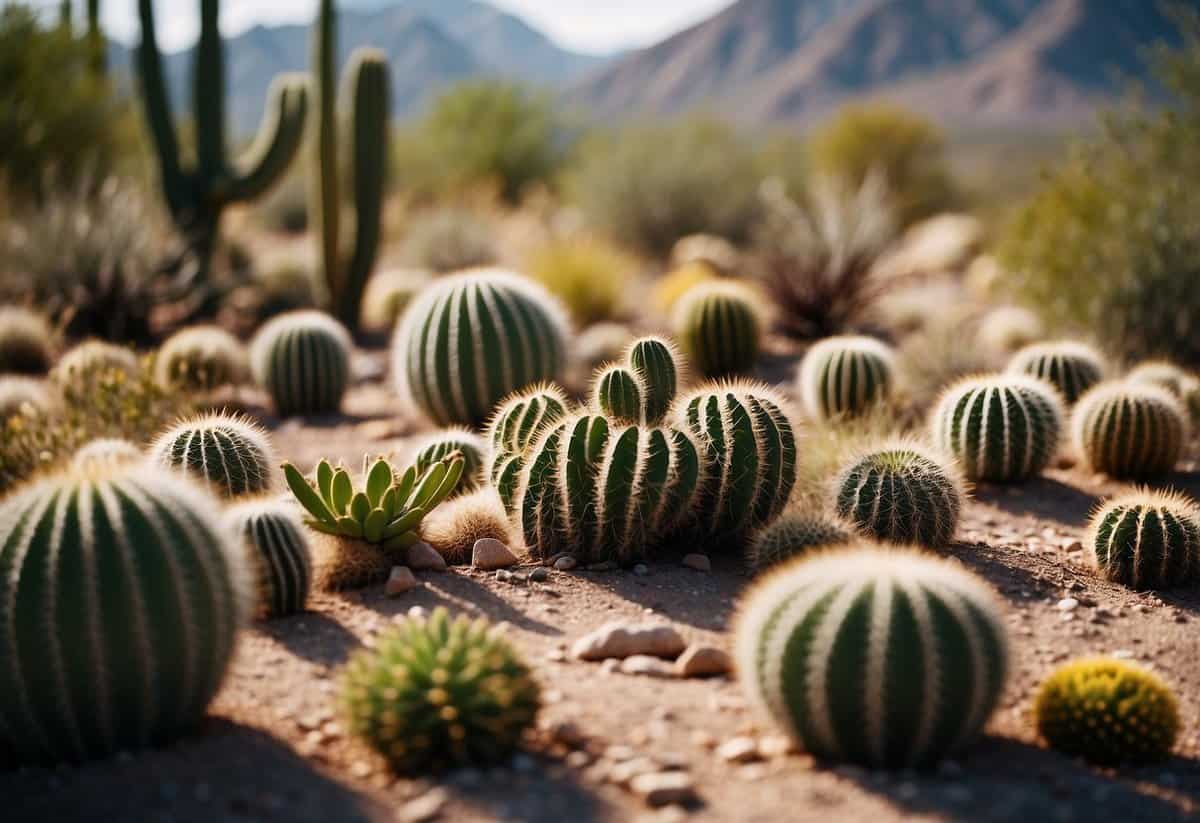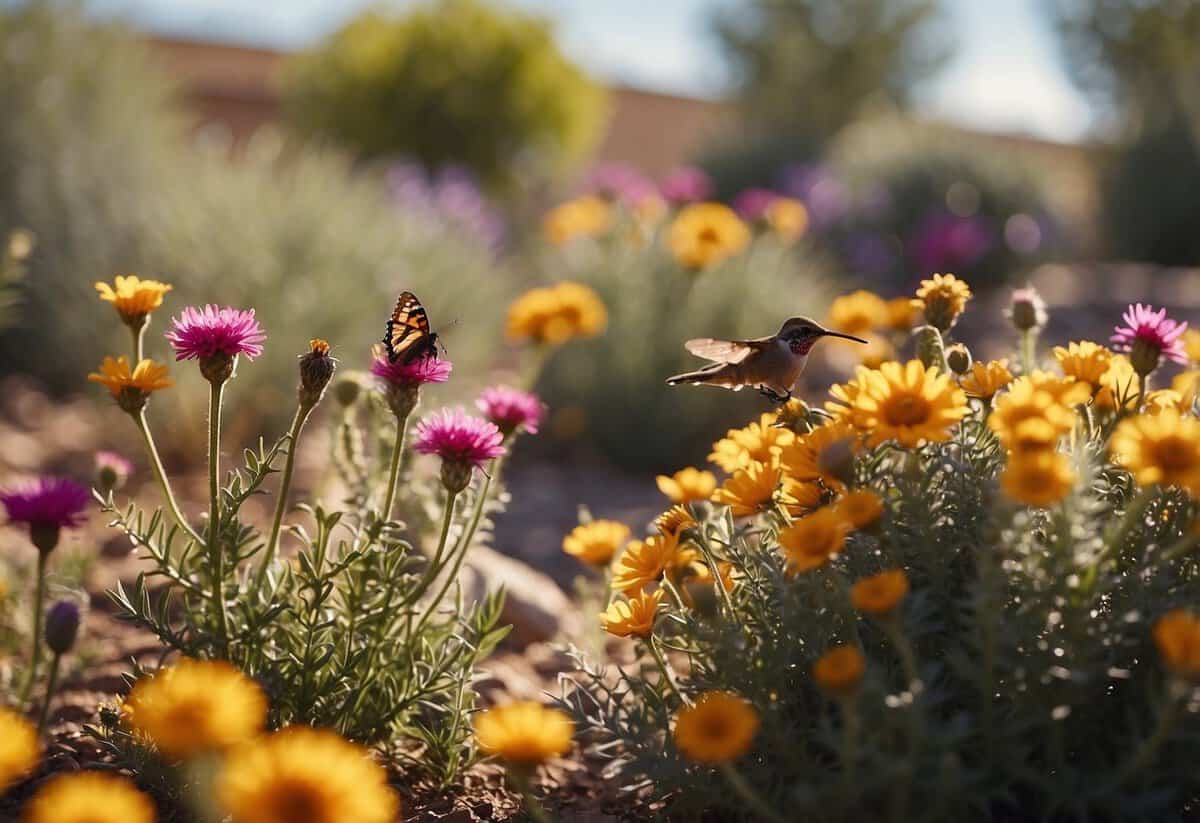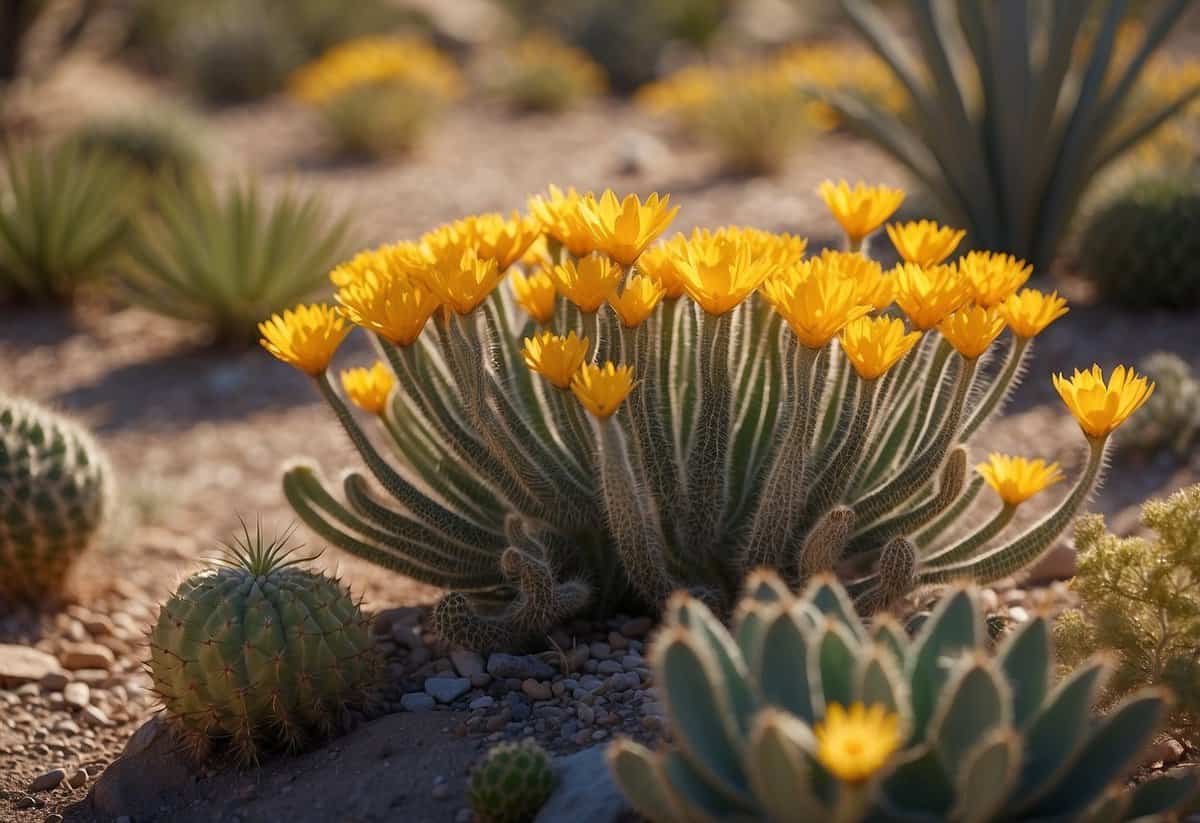Garden Ideas Arizona: Creative Tips for Desert Landscaping
Creating a garden in Arizona can be both rewarding and challenging. The unique climate with its hot summers and mild winters offers opportunities to grow a variety of plants that thrive in a desert environment. Are you wondering how to make the most of your garden space in Arizona? You can find inspiration and practical ideas for creating a beautiful, low-maintenance garden that suits the local conditions.

Whether you are looking to add colorful flower shrubs, create a rock and gravel landscape, or incorporate drought-tolerant plants, there are many ways to make your garden flourish. By choosing the right plants and design elements, you can craft a stunning garden that not only looks great but is also sustainable and easy to maintain.
1) Desert Wildflower Gardens

Desert wildflower gardens can bring a burst of color to your Arizona landscape. These gardens use native plants that thrive in the arid climate.
Some popular choices include saguaro cactus blossoms and Mojave lupines. These plants require minimal water, making them perfect for sustainable gardening.
Adding local wildflowers can also attract bees and butterflies, enhancing the beauty of your garden. Explore more about this at native Arizona wildflowers.
2) Succulent Rock Garden

Creating a succulent rock garden in Arizona can be a fun and beautiful project. Start by choosing drought-tolerant plants like Hens and Chicks, which can thrive in stone walls and between stepping stones with little water. Use flat rocks to add height and create visual interest.
For added texture and color, mix in large flat stones around your plants. Add cool sandstone boulders for visual appeal. This combination will help you create a beautiful and sustainable garden. For more creative ideas, check out these tips.
3) Native Arizona Plants

In Arizona, native plants play a big role in creating beautiful and sustainable gardens. These plants are adapted to the desert climate, so they need less water and care. They also support local wildlife.
The Desert Marigold is a great choice for your garden. It attracts bees and other pollinators. Birds like doves and sparrows enjoy its seeds.
You might also like the saguaro cactus. Its blossoms are famous and add a unique touch to any garden.
4) Cacti Arrangements

Cacti arrangements are perfect for Arizona gardens. They are not only low-maintenance but also visually striking. You can mix and match different types of cacti to create unique designs.
Consider using a red cactus garden with red shale for contrast. Adding layers of gravel or sand can also enhance the look. Try placing taller cacti at the back and smaller ones in the front for a balanced design.
For a bold statement, use iconic cacti like the Saguaro. They are native to the Sonoran Desert.
5) Shade-Proof Plants

Even in the bright Arizona sun, some areas of your garden may enjoy some shade. It’s important to pick plants that can thrive in these conditions.
Jasmine is a great choice. It’s a lovely plant with fragrant flowers that do well in shaded spots. Another good option is the Agave, which is both striking and low-maintenance.
Consider planting Donkey Tail. Its unique, trailing stems add texture and interest to your garden. Day Lilies also perform well in shade and bring a pop of color.
For more ideas, check out this guide on plants that grow well in shade in Arizona.
6) Outdoor Fire Pits

Outdoor fire pits can add warmth and ambiance to your Arizona garden. They create a cozy spot for gathering with family and friends.
Native succulents and cacti like prickly pear and barrel cactus work well around fire pits. These plants thrive in the desert climate and add visual interest to the space.
Always keep safety in mind. Maintain a safe distance around the fire for children and pets. Keep a fire extinguisher nearby and ensure your fire pit is supervised when in use. Check out more ideas for your outdoor fire pit at Arizona Living Landscape & Design.
7) Pollinator Garden

Creating a pollinator garden in Arizona is a rewarding project. It can attract bees, butterflies, and other beneficial insects. This helps keep your garden healthy.
Consider planting native species. For example, White Yarrow and other drought-resistant plants thrive here.
Visit local spots like the Arizona-Sonora Desert Museum pollinator garden for ideas.
8) Drought-Resistant Herbs

Growing drought-resistant herbs can be both practical and beautiful for your Arizona garden. One great choice is rosemary. This hardy herb thrives in hot and dry climates.
Lavender is another excellent option. Its lovely purple flowers add color while being able to withstand arid conditions.
Consider adding hyssop to your herb garden. This herb is known for its pretty blue flowers and drought resilience, making it a smart pick for dry environments.
9) Colorful Desert Perennials

In Arizona, you can grow a variety of colorful perennials that thrive in desert conditions. Bougainvillea is a popular choice. Its vibrant flowers add a splash of color to your garden. You might also like the Firecracker Penstemon, which has bright red blooms.
Another option is Yellow Bells, known for their cheerful yellow flowers. Agaves are also great, as they come in different sizes and can handle the dry climate well. These plants are all beautiful and easy to maintain in your Arizona garden.
10) Edible Arizona Plants

You can grow a variety of edible plants in Arizona. The warm climate is perfect for a range of fruits and vegetables. Consider growing citrus trees like lemons, limes, and oranges. These trees thrive in the Arizona sun.
Vegetables like carrots also do well here. They grow underground, which helps them avoid sunscald. Another great option is artichoke. Just cut the plants down and mulch them heavily to survive the summer heat.
Best Plants for Arizona Gardens

Arizona’s climate poses unique challenges for gardening, but choosing the right plants can turn your garden into a thriving oasis. Focus on drought-resistant plants, native plants, and heat-tolerant flowers to ensure success.
Drought-Resistant Plants
In Arizona, water is a precious resource. Choosing drought-resistant plants, like succulents and cacti, helps conserve water while adding beauty. Succulents such as aloe vera and agave store water in their leaves, making them perfect for dry environments.
Consider planting cacti like the saguaro or prickly pear. These varieties not only need little water but also provide unique textures and colors. Bougainvillea is another great option, as it thrives in dry conditions and adds vibrant hues to your garden.
Native Plants
Native plants are adapted to Arizona’s hot, arid climate and require less maintenance. Trees like the palo verde and mesquite provide shade, which helps keep your garden cooler. The palo verde has distinctive green bark and yellow flowers.
Shrubs such as brittlebush are ideal for their low water needs and attractive yellow blooms. Desert marigold is another excellent choice, with its bright yellow flowers and ability to thrive in rocky soil. These native plants support local wildlife, enhancing biodiversity.
Heat-Tolerant Flowers
Brighten your garden with heat-tolerant flowers. Choose varieties that can withstand Arizona’s scorching sun. For instance, lantana is a tough plant that produces colorful clusters of flowers throughout the summer.
Zinnias are also perfect for hot climates, offering a wide range of colors and blooming reliably in the heat. Verbena is another option that excels in Arizona’s summer temperatures, producing small, vibrant flowers that attract pollinators like butterflies.
By selecting the right mix of drought-resistant, native, and heat-tolerant plants, you can create a beautiful and sustainable garden suited for Arizona’s challenging climate.
Tips for Soil and Water Management

Good soil preparation and efficient watering techniques are essential for a thriving Arizona garden. These methods ensure plants get the nutrients and moisture they need to thrive in a desert environment.
Soil Preparation
Arizona soil is often sandy and lacks essential nutrients. Start by testing your soil to check its pH and nutrient levels. You can get a test kit from a local garden center. Adding organic matter like compost can greatly improve soil structure and fertility.
Steps for Preparing Your Soil:
- Test Soil: Determine pH and nutrient levels.
- Add Compost: Enrich the soil with organic matter.
- Mix Well: Turn the compost into the top 6 inches of soil.
Pro Tip: For extra nutrient boost, you can also add organic fertilizers such as bone meal or blood meal.
Improving soil quality helps with water retention and root development. Well-prepared soil provides a strong foundation for your plants and helps them survive the harsh desert climate.
Efficient Watering Techniques
Water management is crucial due to the arid Arizona climate. Using the right watering techniques can drastically reduce water waste and ensure your plants get what they need.
Types of Efficient Watering Methods:
- Drip Irrigation: Delivers water directly to the root zone. It reduces evaporation and runoff. More on drip irrigation here.
- Soaker Hoses: Best for vegetable gardens. They provide slow, deep watering.
Additional Tips:
- Water Early: Morning watering reduces evaporation.
- Mulch: Apply a layer of mulch to retain soil moisture and cool the roots.
Pro Tip: Avoid watering during the hottest part of the day to minimize evaporation loss.
Using these efficient watering techniques helps save water and keeps your garden healthy. Tailor your watering schedule to the specific needs of your plants for the best results.
Creating Shade in Your Garden

The Arizona sun can be intense, and creating shade is key to keeping your garden cool and thriving. Use structures and shade trees to protect your plants from harsh sunlight.
Using Shade Structures
Shade structures are vital for gardens in Arizona. Options like pergolas and shade sails are popular and effective. Pergolas provide sturdy shade and can even support climbing plants. They offer both style and function to your garden. You can customize them with paint or vines to match your garden’s theme.
Shade sails are another great choice. They are simple to install and can be adjusted to cover different areas as needed. They come in various colors and sizes, adding a modern touch to your space.
For a more flexible option, portable shade canopies can be moved around. This makes them perfect for temporary shade needs or for keeping work areas cooler. A simple half tent canvas is also good for protecting smaller garden beds.
Install these structures carefully to avoid blocking essential sunlight for some plants. Use durable materials to withstand the Arizona weather.
Planting Shade Trees
Shade trees are a long-term investment for your garden. They provide natural and effective shade while enhancing the garden’s beauty. Mesquite trees and palo verde trees are excellent choices for Arizona, as they are well-adapted to the climate and require minimal water.
Mesquite trees grow quickly and provide dense shade. Their deep roots help them survive in dry conditions. Plant them in areas where you need the most shade.
Palo verde trees have a striking appearance with their green bark and yellow flowers. They offer filtered shade, which is perfect for plants that need partial sun. These trees are also drought-tolerant, making them a practical choice.
When planting, consider the mature size of the tree to ensure it fits well in your space. Space them correctly to allow enough room for growth and to maximize shade coverage. Regular pruning will help maintain their shape and health.







